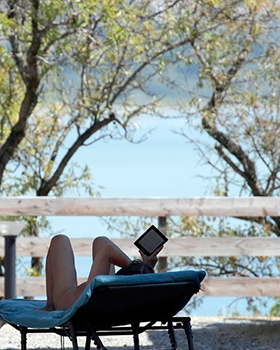

Known for its beautiful scenery, high-quality water and the diversity of fauna and flora, La Palme Lake has been declared a Natura 2000 site of European interest and a wetland of national importance (RAMSAR).
The way this area functions is closely linked to its relationship with the land as well as the sea. Its lifeblood is water: from the sea and watershed of the lake and karstic resurgences. The lack of industrial activity in the watershed, combined with moderate population pressure, has allowed the vast ecological wealth of the lake to remain until the present time. For this reason it has been defined by experts as one of the best preserved lakes of the Languedoc-Roussillon region. La Palme has now become the benchmark for the implementation of the Water Framework Directive (WFD).
The area around the lake is made up of outlying marshes composed of sansouires*, salt marshes and reed beds ** which are flooded to a greater or lesser degree according to the time of year and weather conditions. These marshes are a fantastic habitat for many species of migrating birds to breed or use as wintering grounds. Among these different species you can see are Slender-billed Gulls, elegant Avocets, Pink Flamingos, Ringed Plovers and Little Terns. Motor traffic is prohibited in the salt marshes to avoid disturbing the birds.
The lagoon aquatic vegetation hides nurseries: the lake is a crucial stage in the completion of the life cycles of many aquatic species such as fish and shellfish. These species are fished by commercial fishermen. Eel is the most sought-after species.
But this balance is fragile. Efforts to inform the public undertaken by the Regional Park of La Narbonnaise en Méditerranée have now been rewarded. Windsurfers, fishermen and nature lovers have acknowledged the need to manage use of the lake by setting up an area of around one hundred hectares marked by buoys, which is to be avoided.
When you come to Le Clapotis you will discover an exceptional natural environment. Never forget that one of the basic and essential values of naturism is respect for the environment.
* Sansouïre: salt water body where plants such as Salicornia, Saltwort and Sea Lavender grow.
** Reed bed: swamp where mainly reeds grow.
Le Clapotis 2014, all rights reserved